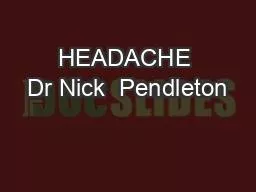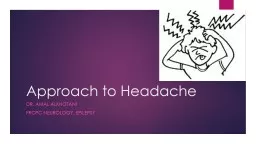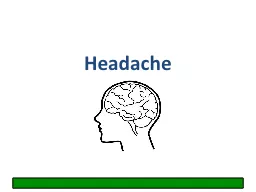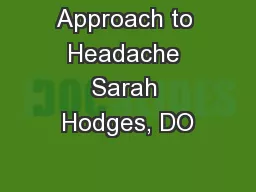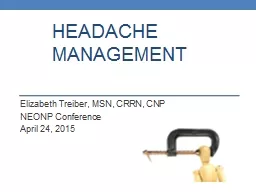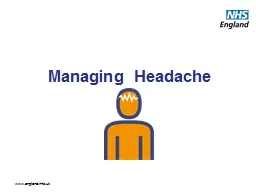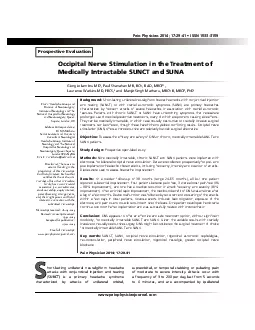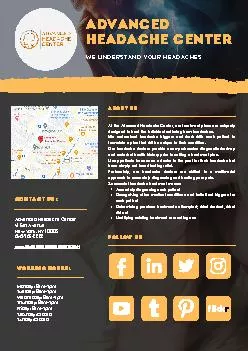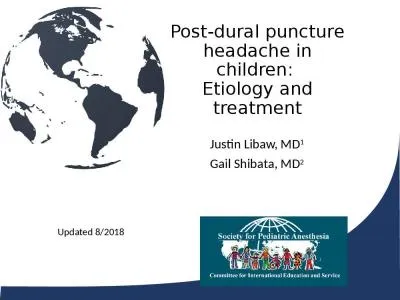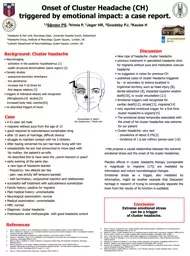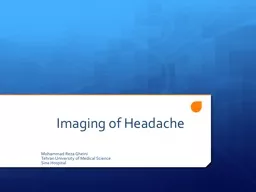PPT-HEADACHE Dr Nick Pendleton
Author : shangmaxi | Published Date : 2020-06-23
September 2015 Headache Tension Type Headache Cranial Nerve Examination Migraine Migraine Treatment Medication Overuse Headache Headache Red Flags Sinusitis Headache
Presentation Embed Code
Download Presentation
Download Presentation The PPT/PDF document "HEADACHE Dr Nick Pendleton" is the property of its rightful owner. Permission is granted to download and print the materials on this website for personal, non-commercial use only, and to display it on your personal computer provided you do not modify the materials and that you retain all copyright notices contained in the materials. By downloading content from our website, you accept the terms of this agreement.
HEADACHE Dr Nick Pendleton: Transcript
Download Rules Of Document
"HEADACHE Dr Nick Pendleton"The content belongs to its owner. You may download and print it for personal use, without modification, and keep all copyright notices. By downloading, you agree to these terms.
Related Documents

